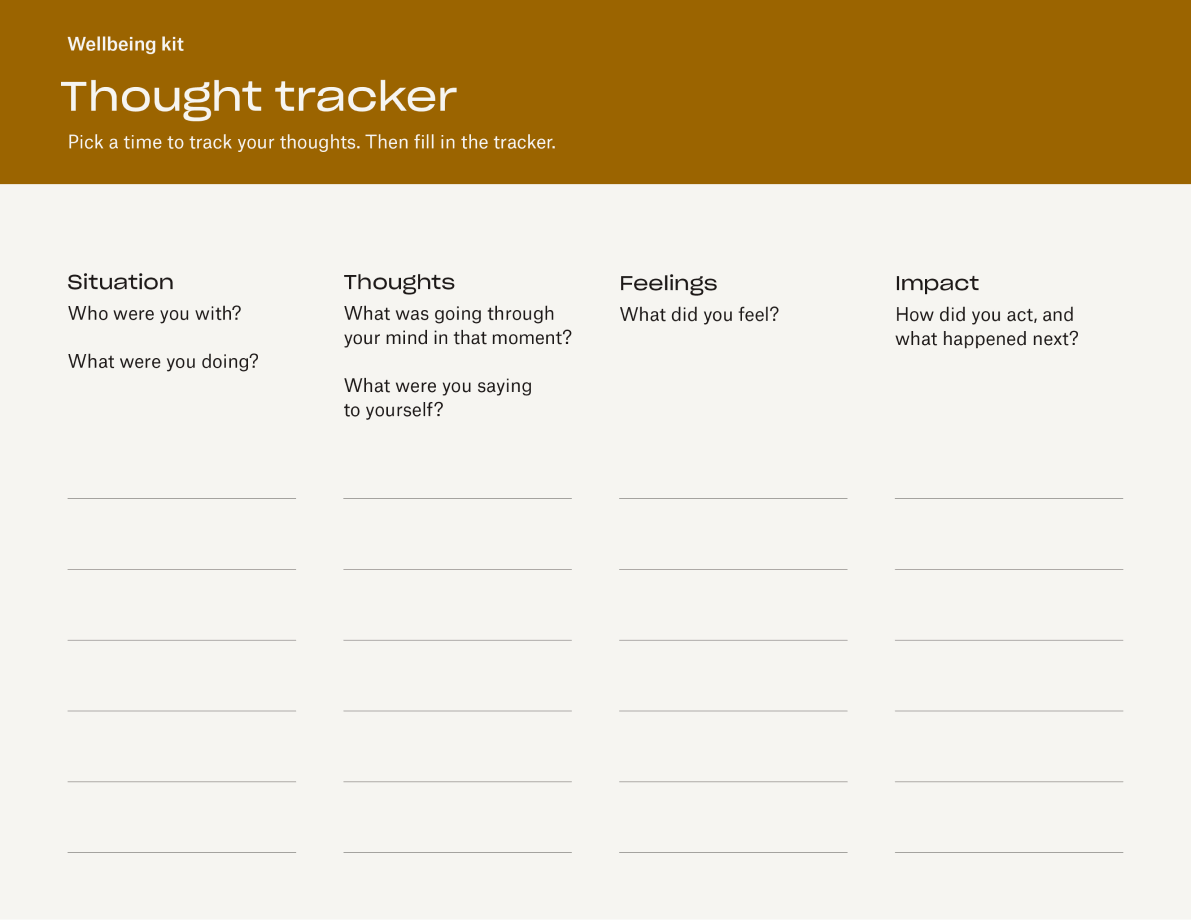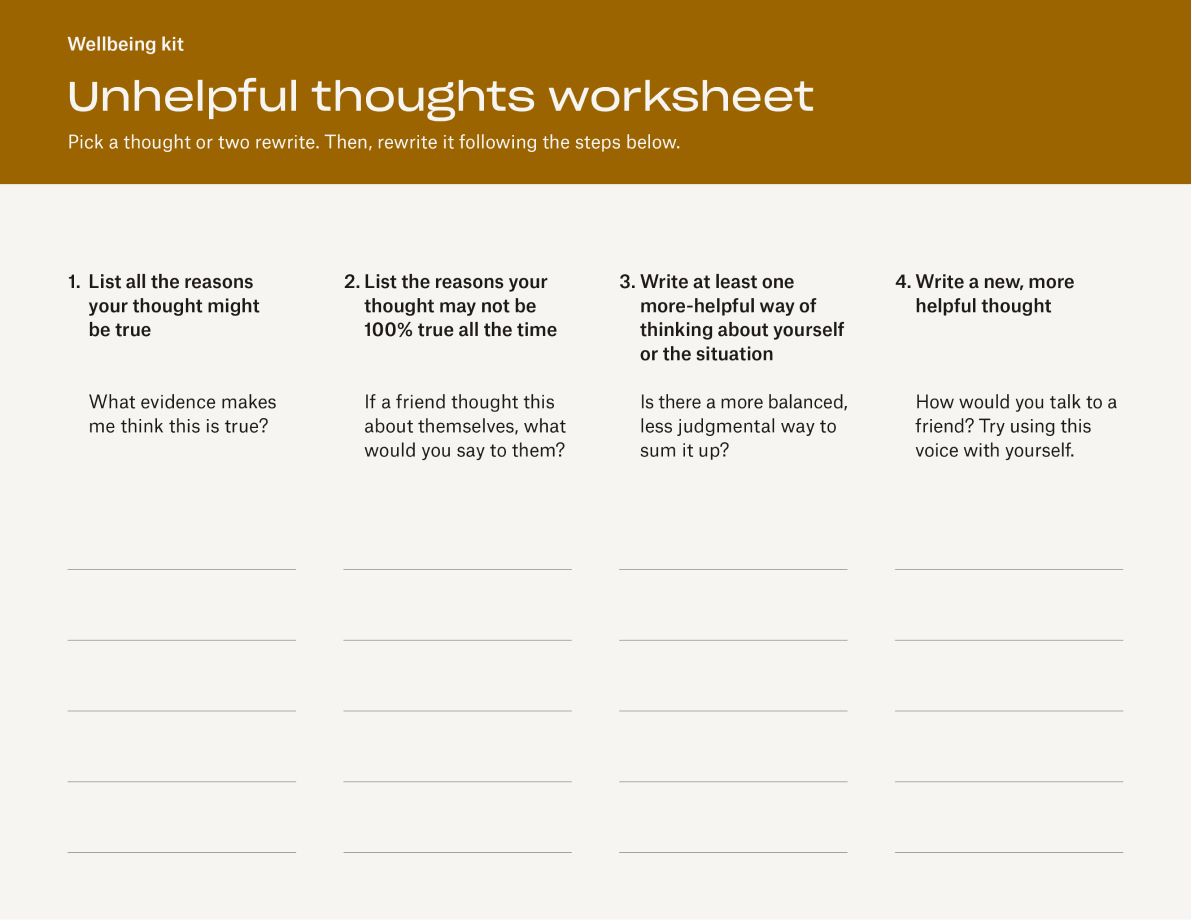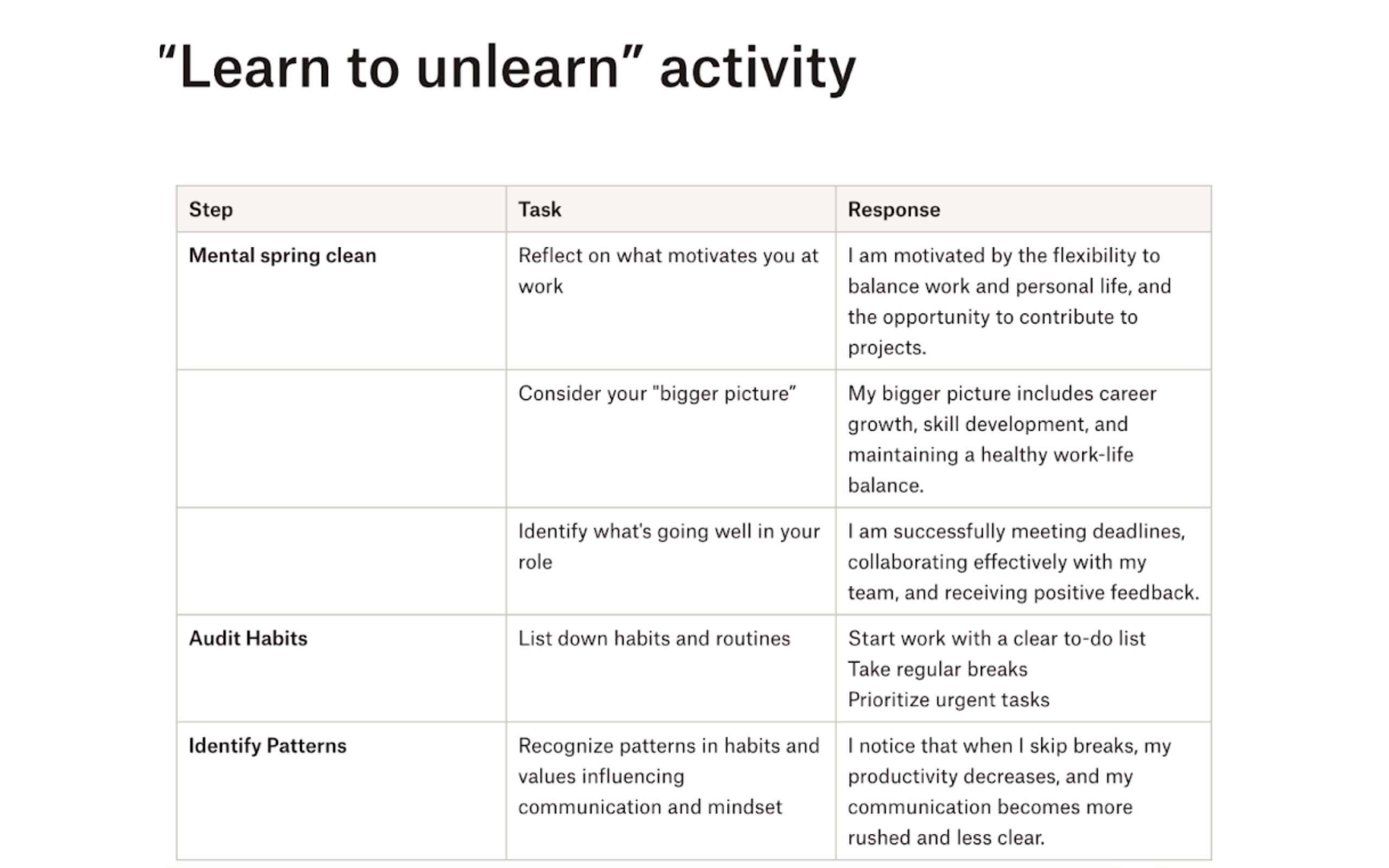Intrapersonal communication—how your team perceives themselves and their work—shapes our internal dialogue and interactions with others. The converse is also true. Interpersonal communication—how we speak to others and vice versa—can significantly affect our connection with others and the ways we get work done together. Working in a distributed manner can make managing negative thoughts and maintaining clear, positive communication more challenging. Yet both are essential for the team’s well-being and productivity.
In this article, we’ll provide practical strategies and exercises for improving your team’s interpersonal and intrapersonal communication. These strategies foster a healthier work environment where team members feel confident, supported and connected.
Intrapersonal communication vs interpersonal communication
Intrapersonal communication is the internal dialogue that shapes thoughts and actions and acts as the voice in our heads we’re not always aware of. Having a positive self-image can enhance this inner dialogue, boosting creativity, focus and decision-making.
But the brain isn’t always rational and despite personal growth efforts, insecurities can still creep in. Left unchecked, negative thoughts can lower morale and impair decision-making.
Interpersonal communication, on the other hand, refers to the external dialogue between people. It involves exchanging information, ideas and feelings and how we interact with others through conversation, body language and social cues. It affects how we perceive and engage with the world and helps us build relationships with others.
Together, both forms of communication influence team dynamics.
When interpersonal communication breaks down, it can lead to negative self-talk, like overthinking someone’s tone, second-guessing intentions or wasting time trying to interpret unclear messages. In the same way, if we speak to ourselves negatively, we’re more likely to misread and interpret feedback from others as criticism, creating misunderstandings and straining relationships.
That’s why helping your team build both of these communication skills is key. Let’s examine some examples of positive and negative interpersonal and intrapersonal communication.
Intrapersonal communication examples
We all experience intrapersonal communication uniquely, shaped by our experiences and how we interpret situations. However, common patterns often emerge.
Positive intrapersonal communication:
- Visualising success: “I know my material; I’ve got this.”
- Affirming abilities: “I’ve handled tough tasks before; I can do this!”
Negative intrapersonal communication:
- Self-doubt: “Why did I do that? What was I thinking?”
- Avoiding challenges: “I can’t handle that task; it’s too much.”
Recognising these thoughts can help us understand their impact on our communication style in personal and professional settings.
Interpersonal communication examples
In virtual settings, the ways in which we communicate with colleagues is important. Text and punctuation carry tone and minor details can make a big difference.
Strong interpersonal communication:
- Offering constructive feedback: “The presentation was great! Next time, we could add a slide for key metrics.”
- Providing clear instructions: “Great insights! Let’s consider adding last quarter’s sales trends for more context.”
Unconstructive interpersonal communication:
- Interrupting on a call: “Wait, no, let’s just do it my way.”
- Passive-aggressive responses: “Sure, if you think that’s the best idea…”
The potential for miscommunication in a virtual setting is higher than in traditional workplaces, given the absence of consistent face-to-face interactions. That’s why it’s imperative to equip remote teams with practices and tools they can incorporate into their daily routines to recognise and counter these unhelpful patterns.

How you can improve your own intrapersonal communication
Working remotely is a skill—and just like any other skill, it takes time and practice to master. A key part of honing this skill is recognising patterns in your own intrapersonal communication and how they show up while working on your team.
Negative intrapersonal communication and self-talk can turn normal mental rehearsals into worst-case scenario thinking, leading to unhelpful patterns like overly apologetic communication or reluctance to speak up. In remote work, feelings of isolation can sometimes amplify negative thoughts without the distraction of in-person interactions.
Below, we’ve outlined exercises and frameworks to help turn your internal dialogue into a source of creativity and support.
Use the “rewrite unhelpful thoughts” exercise
A key skill for mastering intrapersonal communication is learning to spot when negative thoughts pop up and figuring out where they’re coming from.
To help get the hang of this, try using our “rewrite unhelpful thoughts” exercise. We designed this worksheet to help pinpoint, assess and tweak thoughts that might be affecting our own actions and decisions.
Here’s how you can use it:
1. Review the “common thinking styles”: After a discussion or at the end of a group meeting, take the time to review the “thinking styles guide” and write down your answer to the prompts, “the most unhelpful thinking style I most often use is____” and “I’m best at reframing unhelpful thoughts when____.”

2. Utilise the “thought tracker worksheet”: A few days after you figure out your thinking style, jot down every thought you remember having during the day on your “thought tracker worksheet”. Specifically, reflect on how that one thought affected your actions in that situation or what happened next.

3. Now, try to “rewrite” your thoughts: Go back through your notes and select two thoughts you consider “unhelpful”. Write down why the thought could be true on your worksheet. For instance, an employee who thinks, “Am I staying productive enough?” might cite days when they didn’t complete everything they had planned as evidence that their negative self-talk is valid.

4. Guide yourself through “reframing” your thoughts: Use the information you've gathered to rewrite the original unhelpful thought. For example, “Am I staying productive enough?” could become “I am making steady progress and learning to prioritise better each day.”
While this exercise is helpful, it’s important to keep in mind that the work doesn’t stop there. It takes continuous effort to see real change. Aim to set aside just 20 minutes in your calendar once a week for some self-reflection. This helps build the habit of transforming old thought patterns and rewiring new ones.
Practise new ways to “shift perspectives”
Another way you can reduce the impact of unhelpful thought patterns is to shift your habits to ones that foster positive intrapersonal communication. This exercise helps replace negative self-talk with affirming, supportive messages reinforcing one's abilities, worth and potential for success.
You can break it down into three parts:
1. Learn to unlearn: Start by doing a “mental spring clean” to reflect on how your current thoughts, habits and values may affect your intrapersonal communication using our “learn to unlearn 101” guide.

2. Shift perspectives: Next, talk to yourself like you would to a friend. Use your habits and thoughts from the previous exercise as examples and reflect on how you would feel if you talked to a friend like you talk to yourself.

Participate in mindfulness team-building activities
Shifting to more of a team mentality when it comes to intrapersonal communication, a great way to lift a team’s spirits is through a simple gratitude exercise, such as setting up a group “gratitude board”. By encouraging teams to both share and hear positive feedback from colleagues, we can better internalise this positivity and reflect back within our own intrapersonal communication. Sharing moments of gratitude can help in this process, squash any negativity that might have built up and foster positive conversations within our team.
Here’s how it works:
1. As a team, “drop a comment”: We use Miro to set up our gratitude board and ask team members to leave a comment whenever they feel grateful to someone in the team throughout the week. For instance, if someone helped them with a project, they could add a note of thanks and a quick story about it.

2. Read and share: We read comments from the board at the beginning of meetings or whenever it feels right. This helps keep gratitude and positive recognition flowing. Team members can revisit the board any time they need a reminder of the good things happening, especially when working asynchronously.
Creating space for ourselves and our teams to be open and honest about what challenges we face with our own intrapersonal communication allows us to connect on deeper levels, especially in distributed work. Through this open dialogue, we’re also able to share how we use daily rituals and tools to improve this communication.
As we discuss in our Remotely Curious podcast “Not Okay” — we’re all social creatures and we learn from each other.
How to help your team develop stronger interpersonal communication
When it comes to helping teams with their interpersonal communication, the first step is to establish a culture of trust between team members. Trust sets the tone and affects the way the messages are received. When there’s trust, a team feels confident to speak up, ask questions and share ideas openly. But getting to know your colleagues and establishing a culture of trust in a distributed team requires intentionality.
At Dropbox, Virtual First is working well for us because we recognised the need for human connection to help establish trust and improve relationships when we designed the model. That’s why we regularly gather in person and design these gatherings around clear goals—be it team-building, finalising a strategy or working on urgent deliverables.
Here are a few ways you can improve your team’s interpersonal communication skills:
Help your team learn how to write for understanding
Great interpersonal communication in the workplace is about effectively getting work done together. In a virtual environment, outside of Zoom, we rely heavily on emails, document sharing and Slack messages to communicate. Therefore, it’s easy for our messages and intentions to get buried in endless threads and lines of text.
One way to address the need for clear written communication is by hosting a focused writing workshop based on our Write For Understanding toolkit. In an upcoming team meeting, this workshop can be utilised to teach your team how to simplify language, focus on key points and structure communication to prevent misunderstandings.
How to host the workshop:
1. Explain the top five rules for good writing: Teach your team the fundamental rules of good, concise writing, by focusing on key principles, like putting the main idea up front instead of burying it in unnecessary details, for example. You can use our Writing 101 worksheet in Dropbox Paper to showcase examples that follow these rules and those that don’t, so they can see exactly what effective interpersonal communication looks like.

2. Encourage your team to grade their writing: Ask your team to select the first three emails from their sent box and evaluate them. Have them use the Writing Scorecard to assess clarity, tone and structure. To ensure this process feels safe, allow everyone to keep their individual assessments private but encourage them to write down their final scores and identify areas for improvement.
3. Run through how to rewrite for clarity: As the leader of this workshop, select an email example from your own sent folder or create a sample text. Share the original, explain its Writing Scorecard rating and highlight areas for improvement. Then, guide your team through a rewrite, focusing on the five principles: main idea first, conciseness, active voice, breaking up complex information and clarity. Show the before-and-after versions to illustrate how small edits can enhance communication.
By teaching and practising these skills, you’re strengthening your team’s interpersonal communication. This investment in writing clarity helps pave the way for more effective collaboration and a more connected, trusting work environment.
Be explicit about etiquette expectations
In a virtual work environment, clear etiquette expectations are crucial for effective interpersonal communication. As we discussed in our Remotely Curious episode Etiquette, transitioning to a Virtual First model at Dropbox required defining when and how we collaborate. Without such guidelines, misunderstandings and strained dynamics can occur.
Setting clear rules helps maintain respect and productivity in remote work, where unspoken in-person norms often get lost. Being explicit about these “invisible rules” fosters better understanding and smoother interactions.
A few ways to do this:
- Clarify meeting expectations: Interpersonal communication thrives on visual cues, so establish guidelines for video use. Let your team know when cameras should be on and when it's okay to keep them off. Encouraging virtual backgrounds can also help create a consistent, distraction-free experience that feels more comfortable for everyone.
- Set an agenda: Without a clear agenda, virtual meetings can easily result in disorganisation. Use our Meeting Prep worksheet to send out an agenda in advance and establish a structure for the conversation. To keep things on track, start meetings with quick updates or set specific times for Q&A. This approach gives everyone a chance to prepare, ensuring that they know when to actively engage and when to listen.

- Avoid interruptions: To run effective meetings, explicitly say you’d like to hear everyone’s perspective. It’s important to guide conversations back on track when interruptions happen, in a professional and polite way. This ensures all voices are heard, strengthening team relationships.
By setting expectations on how to communicate during meetings, you enable your team to navigate virtual communication with clarity and respect, ultimately improving their interpersonal connections. When everyone understands the rules of engagement, it levels the playing field, making sure everyone feels valued and empowered to contribute.
Help your team transform their communication
Interpersonal and intrapersonal communication both impact how your team feels about their work and the relationships they build with one another.
If they don’t feel comfortable speaking up and communication styles are unclear, they might spiral into negative self-talk. Similarly, when team members get stuck in this cycle without a chance to clear up their thoughts or seek support, it can spill over into interactions and affect team dynamics.
Both types of communication are teachable skills that need practice. Identifying negative self-talk isn’t a quick fix and expecting good communication without setting clear guidelines probably won’t work.
Our advice? Provide the right tools and guidelines for your team to help create a space for honest and helpful communication, both internally and externally.
Want more exercises and frameworks to positively influence your distributed team’s dynamics? Check out all of our Virtual First Toolkit.


